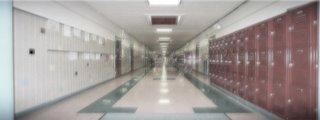
What does "Assistive Technology" really mean?
"…any item, piece of equipment, or product system, whether acquired commercially or off the shelf, modified, or customized, that is used to increase, maintain, or improve functional capabilities of individuals with disabilities." This is the classic definition, used in the law, and constantly repeated, but hopefully for all students of whatever age we want to think of assistive technology in the broadest possible terms.
I prefer "Universal Design for Learning Technology" ["UDL Tech"], but that is a different concept for many of the same systems, indicating that technology choices, that is – tool choices, should be made available to all students without any diagnosis requirement.
The vital thing is to understand that "technology" is all around us, an inherent part of our culture and environment. Educators often act is if technology is somehow separate from culture, but that has never been true in human existence since the first stone hammers were picked up from the ground in Africa. It is all "technology." A stairway at the entrance to your school is technology, as is a ramp. The lighting in the corridors and in your classroom is technology. The school's floor surface is technology, as are the classroom seating, the windows, and the sound absorbing materials in the classroom ceiling. Clothing is technology, so are books and papers, pens and pencils, chalk and whiteboards, videos and doorknobs. The PA system, clocks, and bells are technology. The school bus is technology, as is everything that we build and design for human use.
Assistive Technology means technology adapted or specifically chosen to assist someone with a disability. Universal Design for Learning Technology means offering tech options that increase the functional abilities of all.
This matters for students who are "at risk" because, for whatever reasons, "standard practices" make life difficult for them, and thus they are more deeply impacted by every piece of technology, just as a short person is more impacted by high shelves than "an average height" person and a tall person is more impacted by car door height than "an average height" person. Uncomfortable classroom furniture and classrooms with poor lighting and sound control tend to exacerbate the problems we associate with ADHD, EBD (EI), LD, and CI diagnoses. All students are impacted negatively by things like this but with each step that a child is away from the culturally-described "norm" the ability to compensate for these difficulties decreases.
It also matters because if we do not understand that "this is all technology" we will not be able to see that schools unfairly privilege certain techniques for no other reason than the fact that those methods are comfortable for those in power. Reading print on paper in a binding is, of course, just one technology for taking recorded information and giving it to an individual. Audiobooks are another technology for this. Computer reading is a third. Talking to the "recipient" is a fourth. Watching a video is a fifth. Is one technology superior for every student than any of the others? I have never seen one bit of research to indicate that.
Likewise, the school chair is one technology for classroom occupation. Standing is another. Sitting on the floor or on the windowsill are more. Can one of these technologies be declared "always superior" as a learning environment?
We can go on from there. Is it better for student "A" to move from classroom "One" to classroom "Three" through the school corridor or by running around the building to burn off excess energy? Is it better for student "B" to record her thoughts via dictation to a computer than to write them down with a pen? Should student "C" use a QWERTY keyboard, a Dvorak keyboard, and ABC keyboard, or should they use a microphone or perhaps type via their cell phone? Will student "D" absorb more sitting under fluorescent lights or in the light of the window?
As you move through every educational environment that you observe this school year, look around. See all the conscious and unconscious "technology" decisions that people in power have made that may make life more difficult for a wide range of students. Then consider what could be changed, and how that might help everyone.
- Ira Socol

The New York Times and The Guardian had wildly contrasting articles last week about students "who fear going to school," and they represent polar opposite attitudes regarding disability. The Times article, firmly grounded in the United States' "Medical Model" puts all the responsibility on the student, recommending psychotherapy and medication, along with moving the student out of the "standard" school. The Guardian article, following a more "Universal Design" theory, suggests re-training teachers and redesigning school buildings. The comparison makes both worth reading - if you cannot access one or the other email me and I will get a copy to you.
1 comment:
While I was in Houston this summer, I had the opportunity to see a 'sensory room' (a horrible name for it). This one elementary school had taken a small office sized room and given it earth-tone wall paint and lots of diffuse lighting, bean bag chairs, a massage chair, some psychedelic lighting toys, a parachute hanging from one wall to 'hide' under, these really cool padded tubes to wiggle through, and so forth.
The way it worked was that kids would have a schedule to come in one at a time. Apparently the load was light enough they could do this. They made the schedule so that kids could come at the time when they'd have the most problem with their classes or the most overstimulation or whatever the need was.
I pointed out to the teacher who ran that program that these were nice low-tech solutions, and she hadn't thought of it that way.
--htb
Post a Comment